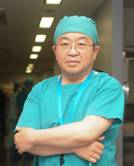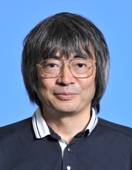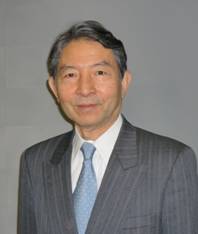|
| Keynotes | |
| @ |
|
30th JSST Annual Conference (JSST 2011)
International Conference on Modeling and Simulation Technology Plenary Talk Saturday, October 22, 10:00-11:00 (Building 2, B1, Conference Hall, 2B101)
Abstract: Magnetic resonance imaging (MRI) provides images with high soft tissue contrast, and can offer physiological information (e.g., temperature and blood and cerebrospinal fluid flow measurements) and chemical information (e.g., magnetic resonance spectroscopic imaging). In addition, MRI is a totally radiation-free imaging technique, unlike computed tomography (CT) and angiography. CT remains an excellent modality for diagnosis of bony structures and hemorrhagic lesions, and also offers a short imaging time, making CT useful for beating and pulsatile organs. CT is a particularly powerful imaging tool in the field of emergency medicine. Angiography is a sophisticated tool for vascular imaging procedures. Angiography is currently the main imaging modality for endovascular interventions, allowing excellent catheter manipulation. In the field of surgery, many optical tracking and magnetic surgical navigation systems are available. In addition, ultrasonographic systems provide the surgeon with high-quality intraoperative images. Moreover, intraoperative CT and MRI have developed dramatically over the past 20 years. In the operating theater, surgeons must identify not only approaching angles, but also lesion remnants during surgical procedures. Complementary combination of these diagnostic modalities is useful to overcome their individual weaknesses, such as imaging speed, soft tissue resolution, radiation exposure, and multi-dimensional projection imaging. Simultaneous use of imaging equipment during surgery also promises favorable outcomes for patients. In February 2006, Tokai University Hospital in Kanagawa, Japan, was officially opened as a hybrid MRI, CT, angiography, and surgical procedure suite, named the Magnetic Resonance Imaging/X-ray/Operation suite (MRXO). Details of the MRXO and the last 5 years of experience with this suite are presented herein. A combined operation and angiography station is located in the center of the MRXO, and the magnetic resonance and computed tomography stations are each placed in adjoining bays connected to the operation/angiography station by shielded sliding doors. The operating table and tables for each imaging modality are positioned in a straight line. On top of each table is a fully magnetic- and X-ray-compatible mobile patient tabletop. The mobile patient table thus allows quick, safe movement of the patient to each modality. During the day, we use this suite for radiological interventions and surgical procedures. For nights, holidays and weekends, the suite is designated for diagnostic procedures. We have safely performed each of the various interventional procedures since opening. The specially designed operating table for the MRXO reduces limitations on neurosurgeons that are typical of standard neurosurgical procedures. This hybrid imaging suite provides high-quality intraoperative imaging, ensuring maximum quality of diagnostic and surgical results. This suite combining surgery and imaging equipment marks a significant milestone in the improvement of stroke and brain tumor treatment and other interventional procedures. The streamlined imaging procedure also contributes to the high cost-effectiveness of the MRXO. 
30th JSST Annual Conference (JSST 2011)
International Conference on Modeling and Simulation Technology Plenary Talk Saturday, October 22, 11:10-12:10 (Building 2, B1, Conference Hall, 2B101)
Abstract: In this talk, I will review our research on hybrid dynamical systems modelling and simulation to personalized hormone therapy of prostate cancer. First, I survey recent progress of hybrid dynamical systems theory and its applications to biological and medical systems. Then, I introduce our application of hybrid dynamical systems modelling and simulation to intermittent hormone therapy of prostate cancer. In particular, I show that we can make a personalized mathematical model for each patient only from observed time series data of serum PSA(Prostate-Specific Antigen) and optimize the schedule of intermittent hormone therapy on the basis of the mathematical modelling. Reference: Ed. by K.Aihara: A theme issue on theory of hybrid dynamical systems and its applications to biological and medical systems, Philosophical Transactions of the Royal Society A, Vol.368, No.1930 (2010). Biography: Prof. Aihara received the B.E. degree in electrical engineering in 1977 and the Ph.D. degree in electronic engineering in 1982 from the University of Tokyo, Tokyo, Japan. Currently, he is Professor of Institute of Industrial Science, Director of Collaborative Research Center for Innovative Mathematical Modelling, Graduate School of Information Science and Technology, and Graduate School of Engineering, the University of Tokyo. His research interests include mathematical modeling of biological systems, parallel distributed processing with chaotic neural networks, and time series analysis of complicated data.
30th JSST Annual Conference (JSST 2011)
International Conference on Modeling and Simulation Technology Plenary Talk Sunday, October 23, 11:00-12:00 (Building 2, B1, Conference Hall, 2B101)
Abstract: 1. Simulation technology as a science 2. Simulation and supercomputing 3. Simulation for safety related problems 4. What we can do by simulation and what we cannot 5. Future issues Biography: Dr. Yagawa is Emeritus Professor at University of Tokyo, Director and Professor at Center for Computational Mechanics Research of Toyo University, World Class University Professor at SungKyunKwan University, President of Nuclear Safety Research Association, President of International Association for Computational Mechanics, Member of Science Council of Japan, Board Member of Engineering Academy of Japan, Chief Editor of International Journal of Computational Methods(World Scientific) and Associate Editor or Editorial Board Member of 12 international journals. He is a Fellow of American Society of Mechanical Engineers, International Association for Computational Mechanics, Atomic Energy Society of Japan, Japan Society for Industrial and Applied Mathematics and Japan Society for Simulation Technology, Honorary Member of Japan Society of Mechanical Engineers and Japan Association for Computational Mechanics and Honorary Doctor of Iasi Technical University. |


